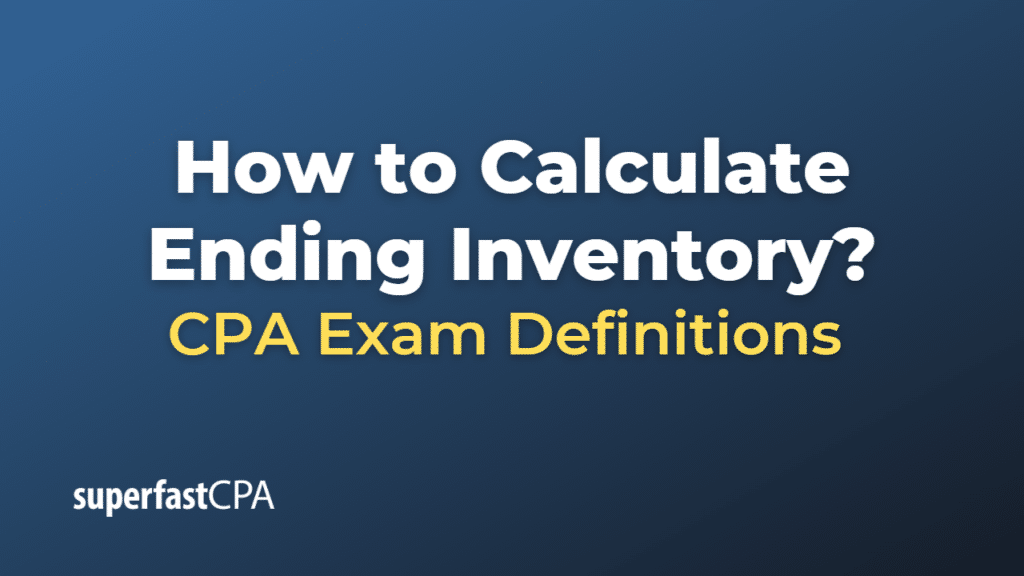How to Calculate Ending Inventory
Calculating ending inventory involves tracking the cost of goods sold (COGS), purchases, and beginning inventory during a specific accounting period. It uses the following formula:
Ending Inventory = Beginning Inventory + Purchases – Cost of Goods Sold (COGS)
Here are the steps to calculate ending inventory:
- Identify Beginning Inventory: This is the value of all the goods that a business has in its possession at the start of an accounting period. It can be found on a company’s balance sheet from the previous accounting period.
- Add Purchases: The next step is to add the cost of all inventory purchases made during the accounting period. This information can be found in the company’s purchasing records.
- Subtract Cost of Goods Sold (COGS): The final step is to subtract the cost of all inventory items that were sold during the accounting period. This information can be found in the company’s sales records.
The result will be the ending inventory, which represents the cost of all unsold inventory at the end of the accounting period. This is an important figure in business accounting, as it is used in the calculation of gross profit and it can give an indication of a business’s efficiency and financial health.
Keep in mind that there can be additional factors like losses, damages, or theft that might need to be accounted for, depending on the specifics of the business and accounting policies.
It’s also worth noting that the cost of inventory can be calculated using different methods, like FIFO (First In, First Out), LIFO (Last In, First Out), or Weighted Average Cost, and the choice of method can significantly impact the value of ending inventory.
Example of How to Calculate Ending Inventory
Let’s imagine that we have a company, XYZ Corporation.
- Beginning Inventory: At the start of the year (January 1), XYZ Corporation’s inventory is valued at $20,000.
- Purchases: Over the course of the year, XYZ Corporation purchases an additional $80,000 worth of inventory.
- Cost of Goods Sold (COGS): Throughout the year, XYZ Corporation sells goods that have a total cost of $70,000.
We can plug these numbers into the formula to calculate the ending inventory:
Ending Inventory = Beginning Inventory + Purchases – Cost of Goods Sold
Ending Inventory = $20,000 + $80,000 – $70,000
Ending Inventory = $30,000
So, the ending inventory for XYZ Corporation at the end of the year would be $30,000.
Remember, this is a simplified example and the actual process can be more complicated. For example, the cost of goods sold (COGS) might be calculated based on a specific inventory valuation method (like FIFO, LIFO, or Weighted Average Cost), and there could be adjustments for items like returns, damaged goods, or theft. The specifics can vary depending on the company and the accounting standards they follow.













